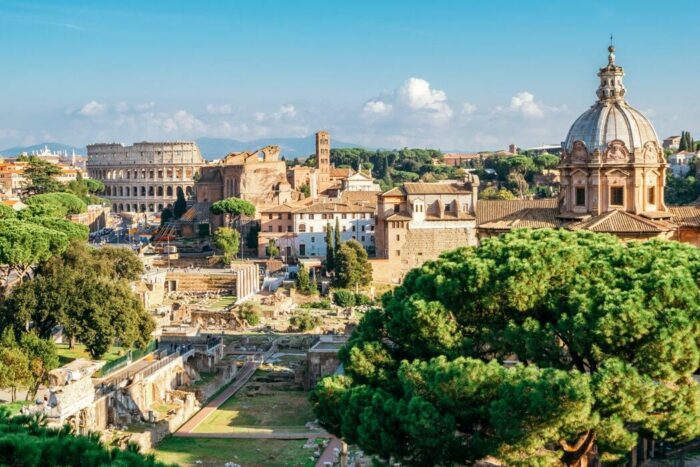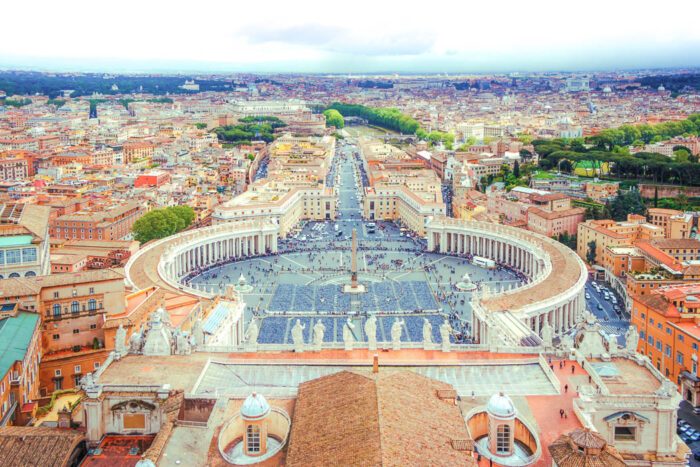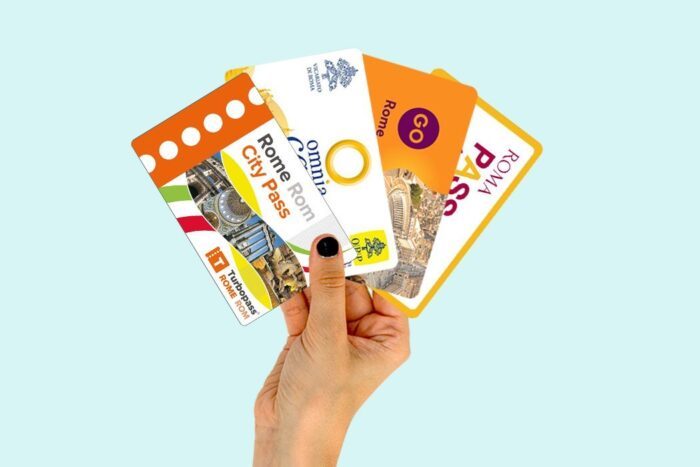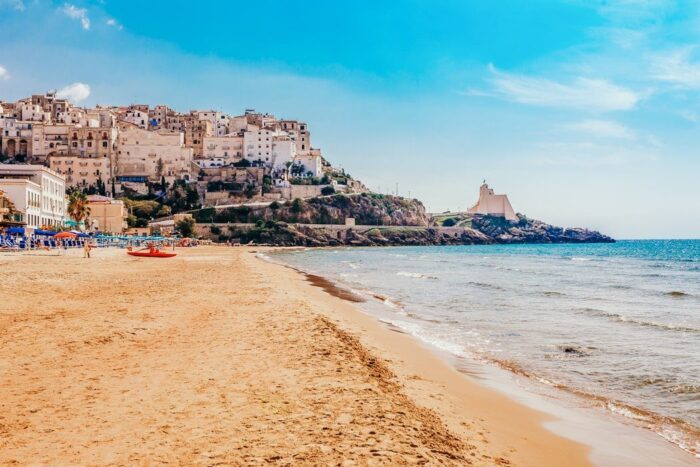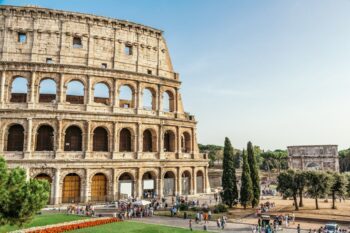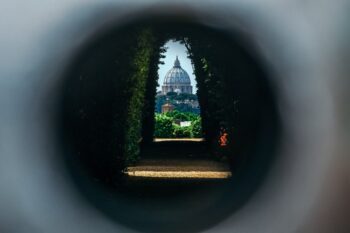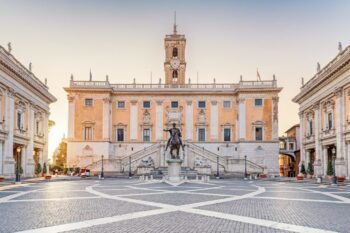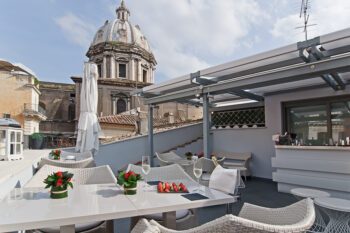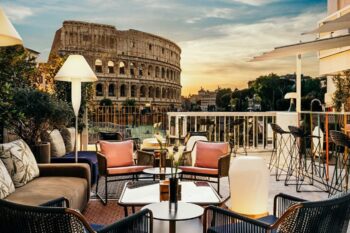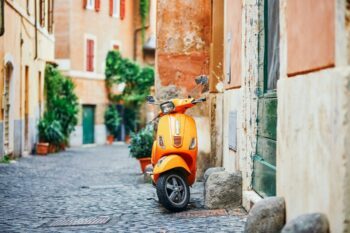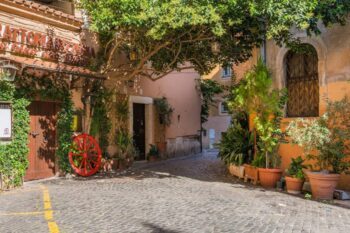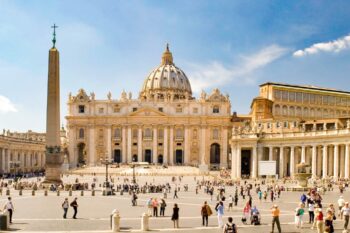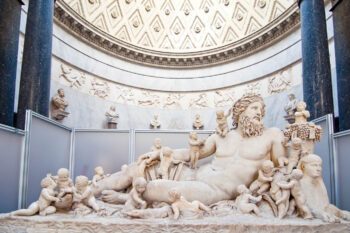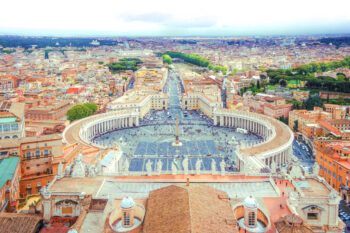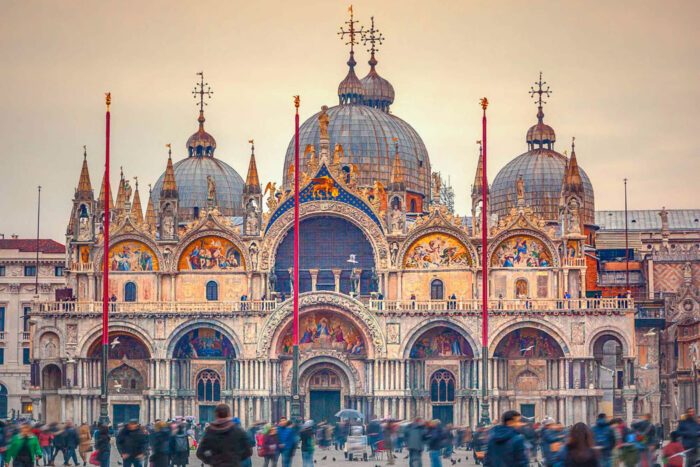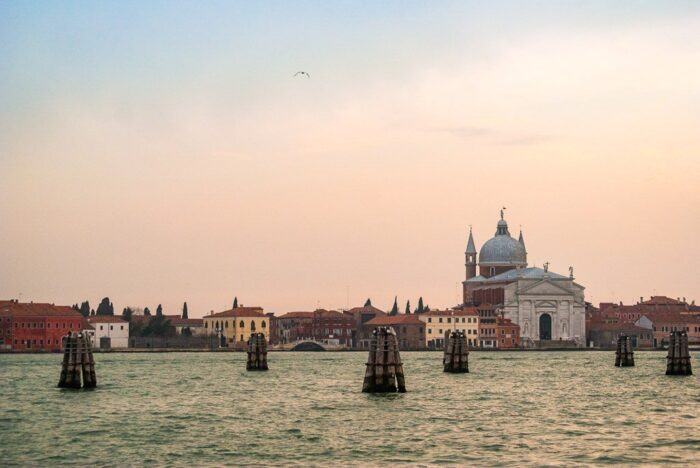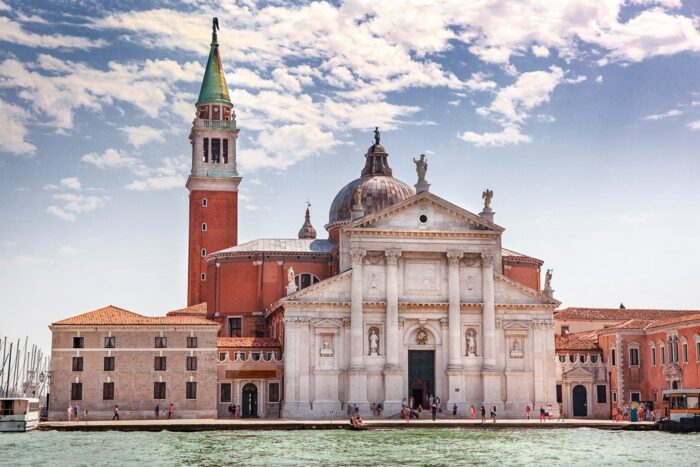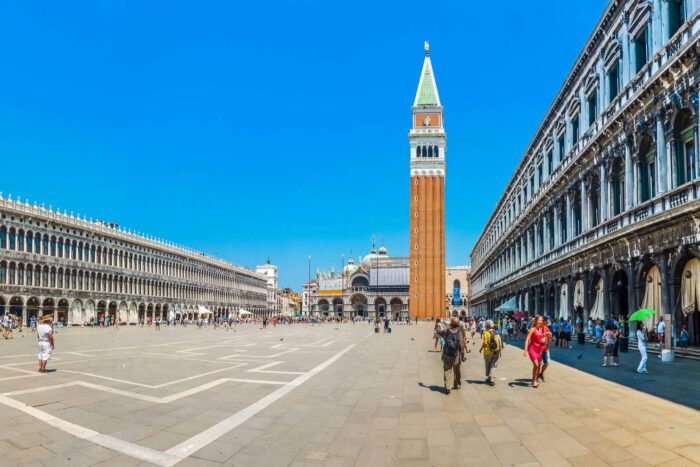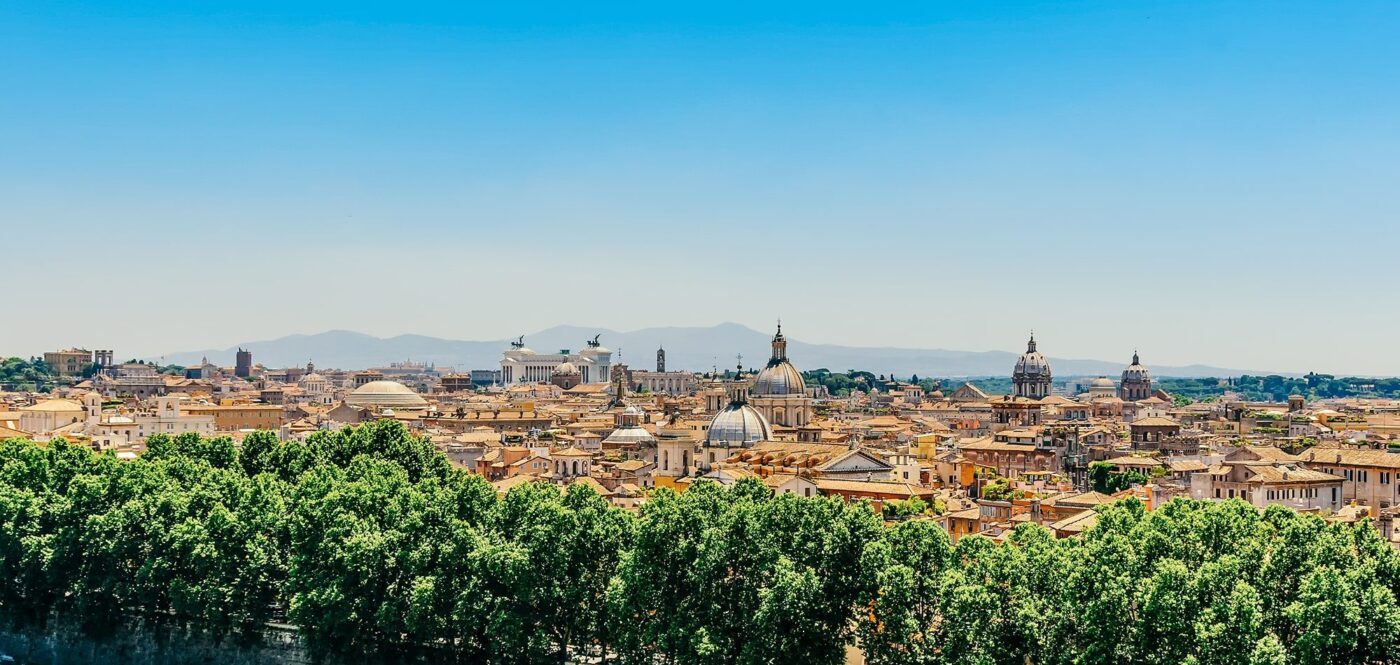
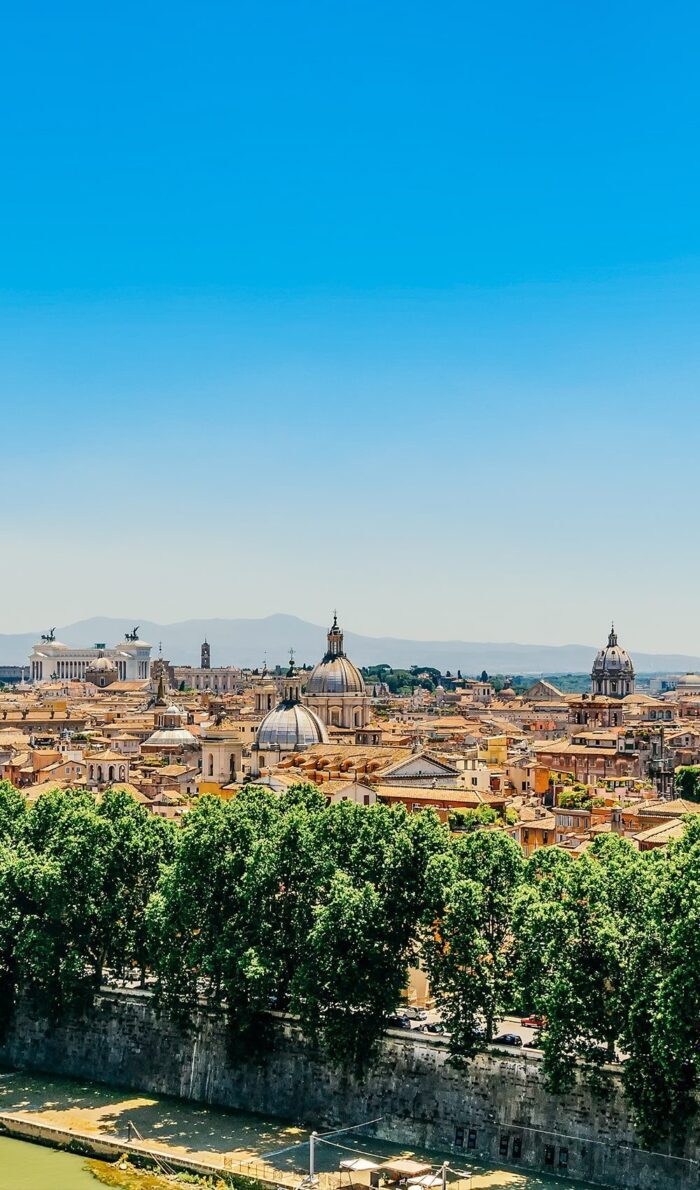
Rome Travel Guide
Our best tips for first-timers
Our Most Popular Posts About Rome
More Rome Posts at a Glance
Orientation in Rome
Rome is big, with a population of around 3 million. But what’s even more impressive is its massive urban area, which is about 10 times the size of Paris.
To make sense of all the space, Rome’s divided into 15 districts and 155 neighborhoods. The districts are called “Municipio” and are numbered with Roman numerals, so Municipio I, II, III and so on.
The center of all the action is Municipio I, which isn’t the biggest district in terms of size, but it’s packed with 22 neighborhoods.
If you’re visiting Rome, this district is the one to focus on, especially the historic center and Vatican City. Most of the famous and beautiful sights of Rome are here.
Our Top 5 Must-See Sights in Rome
Rome has almost countless sights to see, but these five are a must-visit for sure.
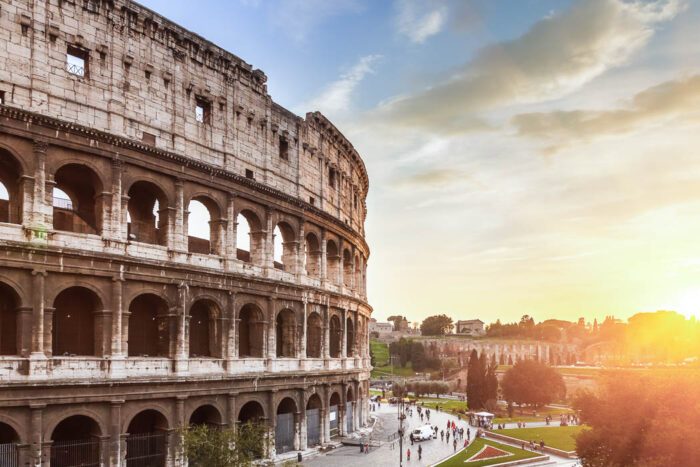
Colosseum
The biggest amphitheater in the world
The best way to dive into Rome’s history is to check out the Colosseum. This massive amphitheater has been standing strong in the heart of Rome for over 2,000 years.
Inside the awe-inspiring walls, you won’t be able to stop being amazed and you’ll learn all about its construction and the brave gladiators who had to fight for their lives in the arena.
All info on the Colosseum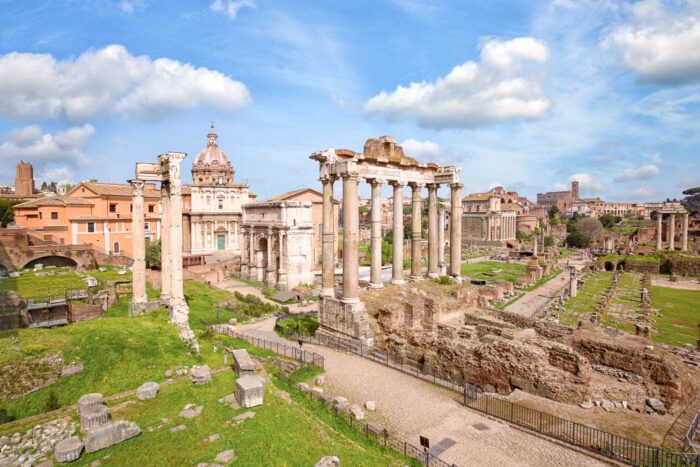
Roman Forum
Most important site in ancient Rome
Right next to the Colosseum another highlight is waiting for you to check it out.
The Forum Romanum excavation site used to be the center of Roman life and therefore the entire world as it was known back then. Today, you can walk in the footsteps of the ancient Romans and explore the remnants of their palaces and temples.
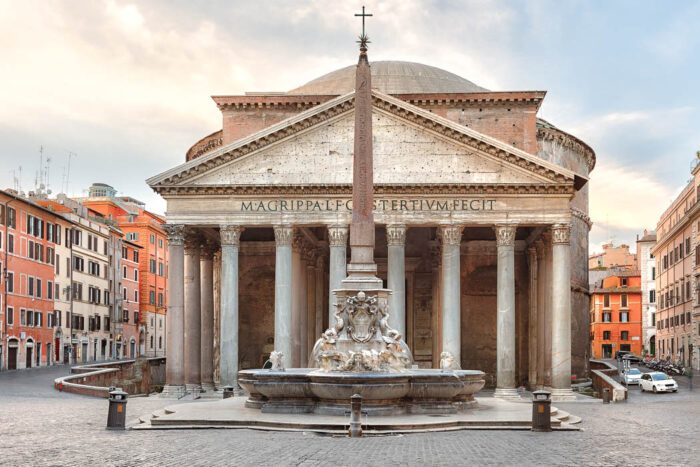
Pantheon
A church hidden in a Roman temple
This church doesn’t look like a typical church, because it’s located inside a converted Roman temple.
People have been praying here for almost 2,000 years.
The Pantheon’s massive dome was the world’s largest for over 1,500 years and has a circular opening in the middle.
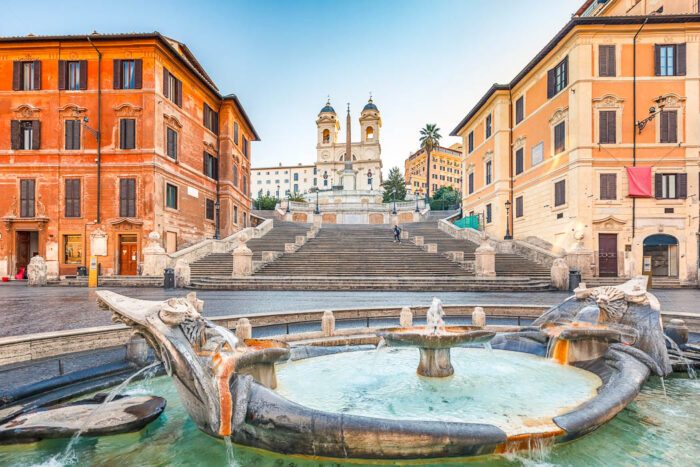
Spanish Steps
A 136-Step highlight
Don’t worry, you heard right. The Spanish Steps are in the heart of Italy’s capital. It got its name because of the Spanish embassy located at the bottom of the steps.
The many steps of the Spanish Steps take you straight from Piazza di Spagna to the church of Santa Trinità dei Monti.
Once you conquer the steps, you’ll also have a beautiful view of Rome.
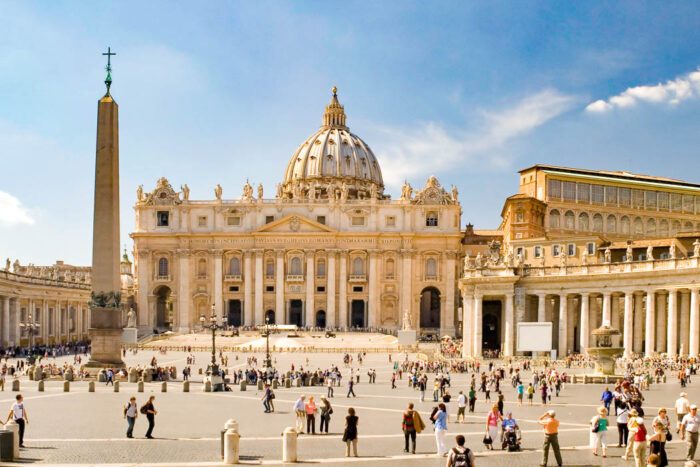
Vatican City
The smallest country in the world
The Vatican, right in the heart of Rome, is the smallest country in the world and the residence of the Pope.
The huge St. Peter’s Basilica and St. Peter’s Square are probably well-known all over the world, but the Vatican Museums with their meaningful artworks and beautiful gardens are definitely worth a visit too.
All info about visiting Vatican CityWhen you’re going on a trip to Rome, the first thing you need to sort out is your accommodation.
It’s not always easy in a city as big as Rome. Hotel prices can be pretty high and you don’t want to be too far from the city’s sights. If it’s your first time in Rome, you’ll definitely want to stay in a central hotel.
To help you out, we’ve summed up the best neighborhoods to stay in, our favorite hotels, and the coolest boutique and luxury hotels in Rome in our articles:
Special tips and activities in Rome
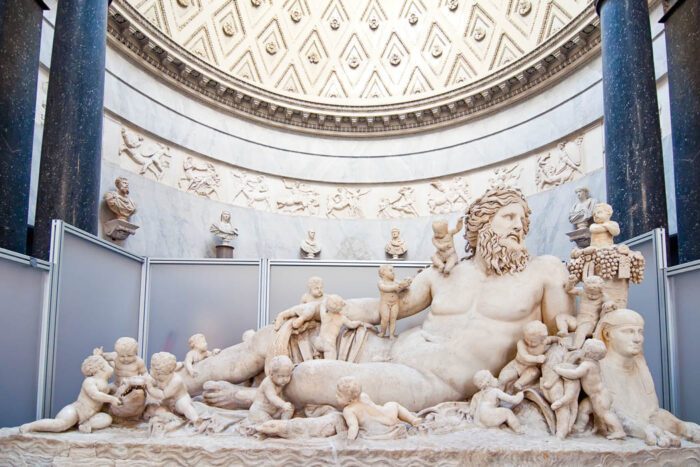
The Most Beautiful Museums
Of course, a city with such a rich history like Rome has tons of amazing museums to check out.
Art and aesthetics are really big here. In fact, Rome has one of the most important art collections in the world. Plus, the Vatican Museums display Michelangelo’s famous ceiling paintings in the Sistine Chapel.
The most beautiful museums in Rome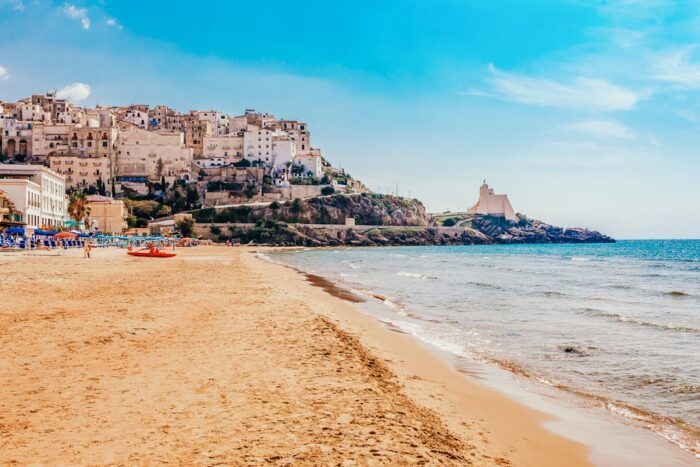
The Best Beaches Near Rome
Take a break from all the sightseeing
In summer, temperatures in Rome usually average between 30-40°C. When it gets that hot, hitting the beach to cool down and relax is the perfect move.
Thankfully, the area around Rome has some beautiful beaches. There’s even a city beach in Rome. And to get to other beaches, you won’t have to travel more than an hour.
The best beaches near Rome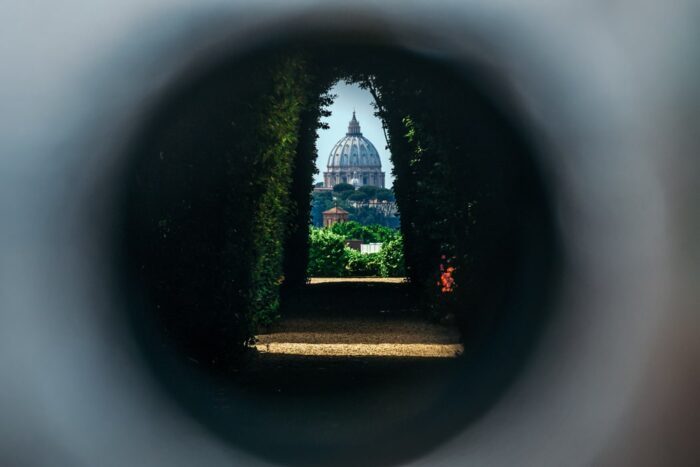
Hidden Gems in Rome
Trendy neighborhoods and the best ice cream
Sure, popular sights are cool, but do you want to check out some hidden gems in Rome that not everyone knows about? Then make sure to hit up one of our secret spots, or better yet, all of them.
In this article, you’ll find charming neighborhoods, a promenade with a view of St. Peter’s Basilica, a stylish rooftop bar and more. And, of course, we’ll tell you where you can get the best ice cream in Rome.
11 Real Hidden Gems in Rome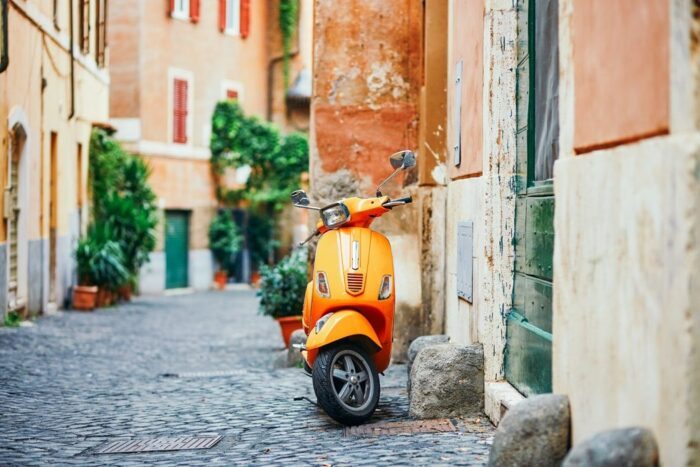
City Tours through Rome
Explore Rome from a different perspective
Starting your Rome vacation with a guided tour is the perfect way to get an overview of all the sights if you’re visiting for the first time.
But even if you’re already familiar with the city, a guided tour of Rome can help you discover it in a whole new way, like on a stylish Vespa tour!
11 Special Guided Tours in Rome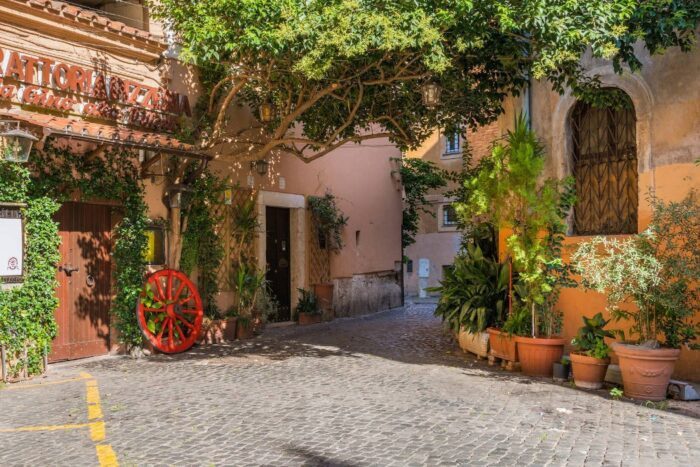
Trastevere Neighborhood
Welcome to Italy!
If there’s one place that really embodies what Italy is all about, it’s Trastevere.
As one of Rome’s most beautiful neighborhoods, Trastevere has made a name for itself with its narrow streets, blooming balconies, and the city’s top restaurants and bars. You can check out some sights or just wander around and enjoy the lively area.
Tips for Trastevere NeighborhoodCity passes for your city trip to Rome
Get the most out of your trip to Rome by using a city pass!
A city pass will save you time and money by giving you free or discounted admission to sights and museums. They often include priority access and transportation, and will make visiting attractions a breeze.
There are several city passes available for Rome, each with different perks and prices. To help you decide, check out our article on Rome’s city passes for all the details:
Public Transportation in Rome
The best way to get around Rome is by taking the subway, which the locals call “Metro”. Although it’s a big city, there are only three subway lines: A, B, and C. You can check which lines you’ll need on the Rome Metro map.
There are also buses and streetcars. The subway stations close at night, and there are night buses instead. You can find information about the night bus lines from the Rome Night Bus schedule.
Be prepared to wait a bit – public transportation in Rome can be a bit unreliable with its schedule. That’s normal in Rome!
Attention: Tickets are not sold on the bus. So if you want to take the night bus, make sure to get your ticket earlier, as convenience stores and metro stations are then usually closed.
Public transportation tickets
Tickets for all modes of transportation can be bought at ticket machines in metro stations, tobacco shops, or ATAC service counters. You can choose between the following tickets:
BIT ticket: 1.50 euros (valid for 100 minutes on all modes of transport, but only one subway ride).
Roma 24 ore: 7 euros (24-hour ticket)
Roma 48 ore: 12.50 euros (48-hour ticket)
Roma 72 ore: 18 euros (72-hour ticket)
C.I.S.: 24 euros (weekly ticket, valid for 7 days)
There’s also the Roma Pass. You can order it online and pick it up at different pick-up stations in the city.
With the Pass, you can ride all public transportation for free, skip the line at the Colosseum, and get discounts for various attractions. The Roma Pass is available for either 48 or 72 hours.
Attention: Unfortunately, transportation to the Fiumicino airport is not included in the Roma Pass.
Getting from the airport to the city
There are two international airports in Rome: Rome-Fiumicino (FCO) and Rome-Ciampino (CIA). Fiumicino is the bigger of the two and is 29 km from the city center. Ciampino is smaller and mainly served by budget airlines like EasyJet, but it’s closer to the city.
Transfer from Fiumcino Airport
From Fiumicino, you’ve got five options to get into the city center, each with its own pros and cons.
The Fiumicino Terravision Bus is the most budget-friendly option, while the Leonardo Express is the quickest. A taxi or private car is the most convenient option, and the Sit Bus is best if you’re staying near the Vatican. Finally, there’s the regional FL1 train, which is perfect for those staying near Rome’s city beaches.
Transfer from Ciampino Airport
Since Ciampino is smaller than Fiumicino, it doesn’t have rail service. But you can still get into the city by bus or car.
The most cost-effective way to get to and from Ciampino is by combining a bus and subway. The Terravision and Sit Buses offer the best value for money, while taking a taxi or private transfer will be the most comfortable option.
For more tips on how to get from the airports into the center of Rome, check out our detailed article:
Local Cuisine in Rome
In Italy, the cuisine varies from region to region, and Rome has its own unique dishes. Like everywhere in Italy, the food in Rome is delicious.
The Roman cuisine is simple, using only a few fresh ingredients without fancy cooking methods, which makes it delicious, healthy, light and easy to digest. And of course, it’s always accompanied by a glass of wine.

Rome's Most Famous Dishes
Absolute must-trys
Definitely give Spaghetti alla Carbonara a try – classic with bacon and egg (no cream!). Spaghetti all’Amatriciana is served with tomato sauce and pork cheek meat. Thin slices of veal with sage leaves and raw ham make the super delicious Saltimbocca alla Romana.
And if you order Coda alla Vaccinara, you’ll be served oxtail in tomato sauce. It’s absolutely delicious and also a typical dish in Andalusia.

Rome's Local Wines
A must-have with any meal
There are plenty of wine-growing areas around Rome, which means you’ll find a bunch of different types of wine in the city. Mostly red wines, but there are also some great whites.
A standout white wine is Frascati. There are several kinds, but we can especially recommend the Fontana Candida and Colli Albani DOC.
Popular Roman reds include the Cesanese del Piglio and the Roma Rosso DOC.
Travel guides for Rome
If you’re looking for more information about Rome, consider getting a travel guide. There’s just so much to see and a handy guide can help you pick out the most interesting sights.
Here are some guides we highly recommend:
- Lonely Planet Rome: a classic guidebook that covers everything you need to know.
- Moon Rome Walks: discover trendy neighborhoods and experience the city like a local.
- Kids’ Travel Guide – Rome: an interactive guidebook that takes young explorers on an exciting journey filled with fun and memorable moments.
Frequently asked questions
When's the best time to visit Rome?
Spring and fall are definitely the best times to visit Rome. From April to June and September to October temperatures in Rome are warm and it doesn’t rain as much, but expect crowds and long lines.
Winter temperatures in Rome are still pleasant, but it’s usually rainy. It’s also the emptiest Rome will be. If you don’t mind the rain and don’t want to wait in long lines at the sights, then winter (especially January) can be a great time to visit. Summer is hot, but there’s way less going on than in spring or fall.
How much does a trip to Rome cost?
Italy’s not exactly the cheapest place to travel to in Europe, and Rome is no exception.
Here’s what you can expect to pay:
Staying in a decent mid-range hotel: 100 to 200 euros
A 1-liter bottle of water from a kiosk: 2 to 3 euros
Beer (0,4 liter): 4 to 5 euros
Cappuccino: 2 to 3 euros
Bus or metro ticket: 1,50 euros
Dinner at a simple restaurant: 20 to 30 euros
Dinner at an upscale restaurant: 30 to 60 euros
In Rome you can either pay with your debit card or credit card, or withdraw money. Withdrawing money abroad usually costs between 2 and 6 euros, or you may have a credit card that doesn’t charge any fees.
Smaller businesses often do not accept credit cards, especially American Express, because the fees are much more expensive for them. So make sure you always have cash on you as well.
Oh, and it’s not customary to leave a tip in Rome. But a lot of tourists still do, and some waiters (who don’t usually earn much) might expect it from you. So, leaving a few extra euros wouldn’t hurt.
How safe is Rome?
In Rome, you don’t need to worry about your safety any more than in other European cities, like London, Berlin or Paris. You can walk around the city’s streets safely even at night. Especially in the center, there’s always something going on and the police are very present.
But of course, there are still cases of petty crime like pickpocketing and scams. Pickpockets often hang around crowded places like the Trevi Fountain where they can sneak into an unsuspecting person’s handbag or backpack.
It’s best to carry around just a little cash and keep an eye on your valuables.
The only place in the center that is less recommended at night is the area around the Termini train station. Except for the forecourt, from which the airport shuttle buses depart, there can be some pretty strange people hanging around the surrounding streets. But that’s often the case with train stations at night.
Can I drink tap water in Rome?
According to EU guidelines, you can drink tap water anywhere in Europe. In Rome, this was already the case 2,000 years ago. So why should it be any different today?
The tap water actually tastes pretty good. There are also little fountains all over the city with clean drinking water where you can refill your water bottle.
What should I pack for my trip to Rome?
If you’re only going to be there for a couple of days, you don’t really need to pack a lot for a European city trip, as it usually has to fit in a carry-on bag.
You don’t usually need to pack a lot for a European city trip, as you’ll usually only be there for a few days and everything has to fit in a carry-on bag.
To make sure you don’t forget anything, here’s our packing list for city trips.
In Rome, a lot of streets are in dire need of repair. There are potholes in the sidewalks every now and then, so sneakers can come in handy. They’re also great if you’re walking around all day visiting sights.
If you plan on going to a restaurant or a club at night, make sure you have appropriate clothing. Italians place a lot of importance on their appearance, especially on Friday and Saturday nights.
Do I need a travel adapter?
In Italy there are three types of electrical outlets, so you might need a travel adapter depending on where you’re from.
A universal adapter is a good choice, because you can use it on future trips too.
How can I communicate in Rome?
Rome has been a popular tourist spot for a long time, so the locals are used to it and almost anyone who works in tourism will have a basic understanding of English.
Most restaurants will have English menus too. Street signs and museum info boards are usually in multiple languages. And in hotels pretty much everyone speaks English.

